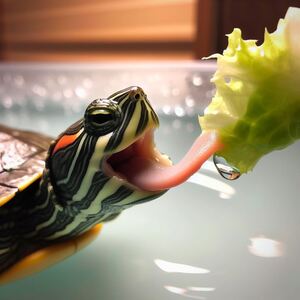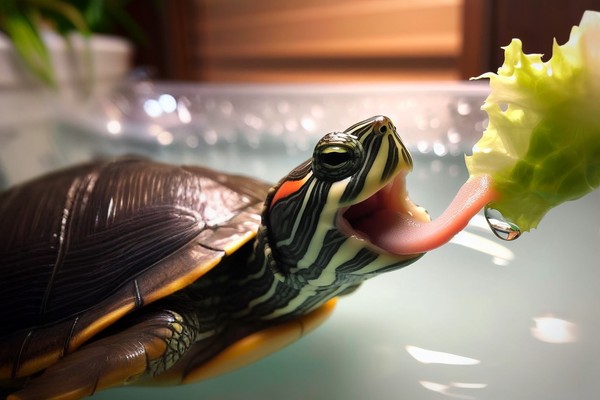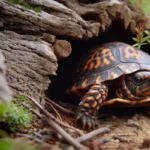Do turtles have teeth? It’s a question that has puzzled many pet owners and turtle enthusiasts alike.
In this article, we’ll dive into the fascinating world of turtle mouths, their unique structures, and how these toothless creatures manage to eat without any teeth.
We’ll also explore the intriguing question: How Turtles Eat Without Teeth?
The Evolution of Turtle Mouths
Turtles have been around for millions of years, and their mouths have evolved to adapt to their specific needs and environments.
Let’s examine the development of turtle mouths and how they compare to other reptiles.
- Ancient ancestors: The earliest turtles are believed to have had teeth, but they eventually lost them through the process of evolution.
- Adaptation to environment: Turtles have adapted their mouths to suit their various habitats, from aquatic environments to dry land.
- Comparison to other reptiles: Unlike turtles, most reptiles have teeth. For example, snakes and crocodiles have sharp teeth to catch and hold onto their prey.
The Unique Structure of Turtle Mouths

Instead of teeth, turtles have beaks that are specifically designed for their diets and lifestyles.
Let’s examine the different types of beaks and how they help turtles eat various foods.
- Keratinous beaks: Turtle beaks are made of keratin, the same protein found in human hair and nails. This makes their beaks strong and durable.
- Different beak shapes: The shape of a turtle’s beak can vary depending on its species and diet.
- Some turtles have sharp, pointed beaks for catching and tearing apart prey, while others have broad, flat beaks for crushing and grinding plant material.

- Functionality: Beaks serve as a versatile tool for turtles, allowing them to catch, hold, and break down various types of food.
How Many Teeth Do Turtles Have?
Do Turtles Have Teeth?
The simple answer is that turtles do not have any teeth. They lost their teeth through the process of evolution and developed beaks instead.
These beaks, as mentioned earlier, are specifically designed to help them eat a variety of foods without the need for teeth.
How Turtles Eat Without Teeth
Turtles may not have teeth, but they have other adaptations that help them eat effectively.
Here’s how they manage to break down food without teeth.
- Strong jaw muscles: Turtles have powerful jaw muscles that enable them to bite and chew their food effectively.
- Crushing and grinding: Some turtles use their broad, flat beaks to crush and grind their food, making it easier to swallow.
- Dietary adaptations: The lack of teeth in turtles has led to specific dietary preferences, such as soft-bodied prey and easily digestible plant material.
The Role of Tongue in Turtle Feeding
In this section, we’ll explore the significance of the tongue in the feeding process of turtles and how it differs from other reptiles.

- Tongue function in feeding: Assists in manipulating and swallowing food, detecting prey, and creating suction in aquatic turtles
- Differences in tongue structures: Turtles have short, thick tongues compared to the more flexible tongues of snakes and lizards
- Swallowing without teeth: Turtles rely on their tongues to push food down their throats and ensure proper breakdown before swallowing
Understanding the role of the tongue in turtle feeding provides valuable insights into their unique adaptations for consuming food without teeth.
The Oral Health of Turtles
Just like any other animal, turtles can experience oral health issues.
Here are some common mouth problems in turtles and tips for maintaining good oral hygiene in your pet turtle.
- Mouth rot: Also known as stomatitis, mouth rot is a bacterial infection that can cause inflammation, redness, and discharge in a turtle’s mouth.
- Proper hygiene and a clean living environment can help prevent this condition.
- Beak overgrowth: A turtle’s beak can become overgrown if it’s not worn down through regular use.
- Providing your turtle with a balanced diet and appropriate chewing materials can help prevent beak overgrowth.
- Veterinary care: If you notice any unusual signs or symptoms in your turtle’s mouth, consult a veterinarian who specializes in reptile care for advice and treatment.
Fascinating Turtle Feeding Facts
Turtles exhibit some unique feeding behaviors that are both interesting and informative.
Here are a few fascinating facts about how turtles find and consume their food.
- Sensory hunting: Turtles use their sense of smell and vision to locate food. Some aquatic turtles even have specialized taste buds in their throats to help them detect prey in the water.
- Prey capture: Turtles employ various techniques to catch their prey, such as snapping their jaws shut quickly or using their front limbs to hold onto food.
- Unusual diets: Some turtles have been known to eat unusual items, like small stones, to help grind up their food in their stomachs.
Caring for Your Turtle’s Dietary Needs
A well-balanced diet is essential for your turtle’s overall health and well-being.
Here are some tips on how to provide proper nutrition for your pet turtle.
- Recommended foods: Different turtle species have specific dietary requirements.
- Research your turtle’s species to determine the appropriate foods to offer, which may include insects, fish, fruits, vegetables, or commercial turtle pellets.
- Balanced diet: Ensure your turtle receives a variety of nutrients by offering a mix of protein, fiber, vitamins, and minerals.
- Healthy eating habits: Encourage your turtle to eat a balanced diet by providing fresh food daily and removing uneaten food promptly to prevent spoilage.
Debunking Turtle Myths
We’ll address some common misconceptions about turtles and their teeth, along with other myths related to turtle behavior and care.
- Turtles and teeth myth: Turtles do not have teeth; instead, they have specialized beaks for consuming various types of food
- Speed myth: While often portrayed as slow-moving, some turtle species can be quite agile and fast, especially in the water
- Shell myth: Turtles cannot leave their shells, as their shells are part of their skeletal structure and provide protection
By debunking these common turtle myths, we can help readers gain a more accurate understanding of these fascinating creatures and their unique characteristics.
Unique Turtle Species and Feeding Adaptations
I will highlight a few exceptional turtle species and discuss their specific feeding adaptations, which have evolved to suit their environments and diets.

- Alligator snapping turtle: Known for its powerful bite, this species uses a worm-like appendage on its tongue to lure fish into its mouth, showcasing a unique hunting technique.
- Leatherback sea turtle: This marine turtle has backward-pointing spines in its throat, which help it capture and swallow jellyfish, its primary prey.
- Box turtle: Equipped with a sharp, hooked beak, box turtles are omnivorous and can tear apart both plant and animal matter, making their feeding adaptation versatile.
Conclusion
So, do turtles have teeth? The answer is no, but they have evolved unique and effective ways to eat without them.
With their specialized beaks, strong jaw muscles, and adaptive feeding behaviors, turtles have managed to thrive in various environments.
Understanding the structure and function of turtle mouths is crucial for proper care and feeding of these fascinating creatures.
Now that you know the surprising facts behind turtle bites and their lack of teeth, feel free to share this article with fellow turtle enthusiasts!










